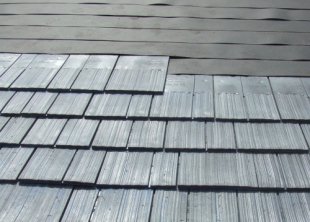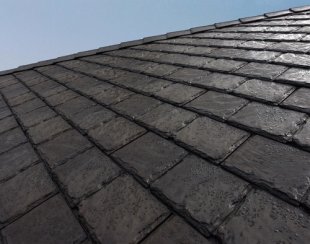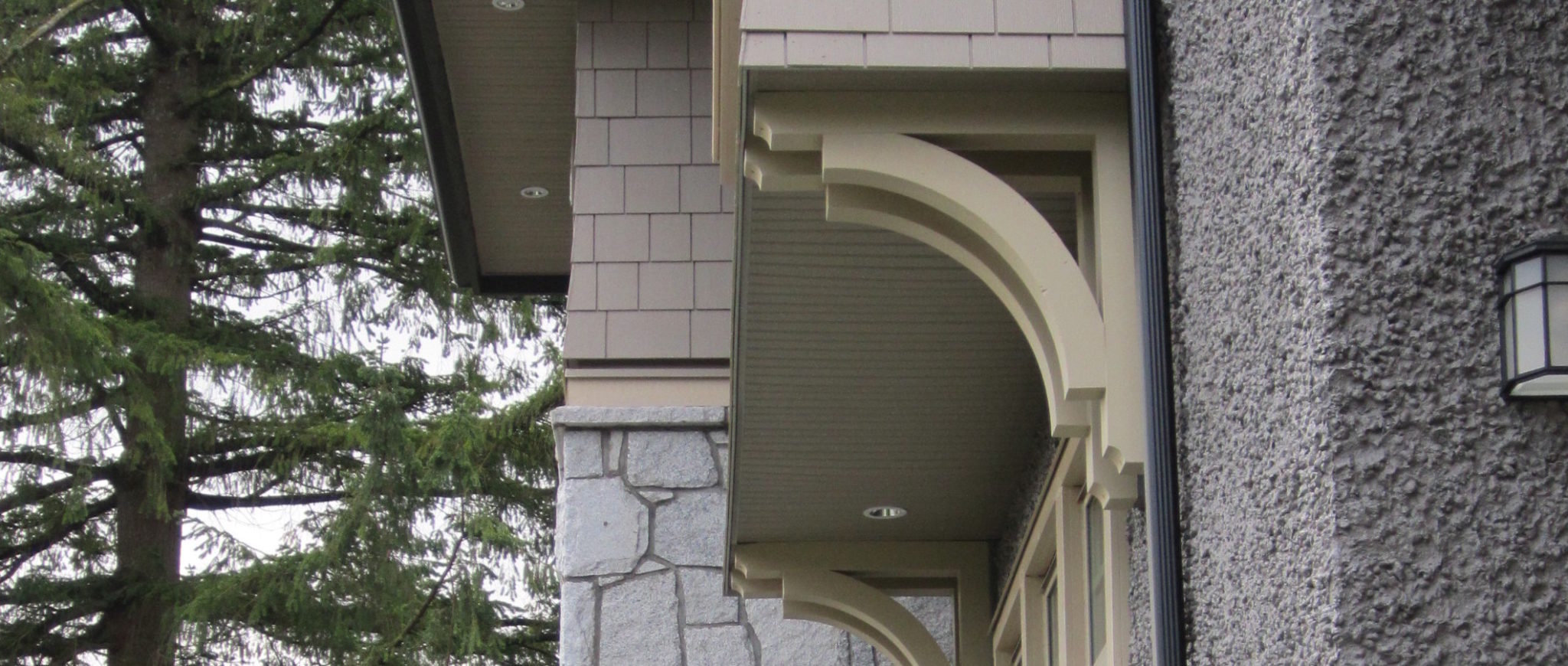
Options for Roofing Materials
Wooden roof (cedar shingles):
Cons: Installation is time consuming, hail can cause splitting of shingles, may need to be stained every 5 to 15 years depending on the type of finish. Pros: Highly resistant to moisture, rot and wind, very low embodied energy. They make for a beautiful, authentic and natural looking roof.
Lifespan and cost: Generally over 30 years, warranties vary from 25 and higher. They can cost between $10 – $15 per sq. ft., which includes installation.
Asphalt shingles:
Cons: High-embodied energy, rarely recycled, can deteriorate rapidly with UV rays, emit solvents into the air when exposed to sunlight, and because they are usually dark in colour they contribute to the ‘heat island effect’ of higher temperatures in urban areas.
Pros: Shingles are the default roof covering, mostly because of price, but in a short time when you have to replace them, they won’t seem so cheap. And as the least durable of options, they constitute the greatest risk of leaking and causing water damage to your home.
Lifespan and cost: 12 to 20 years depending on the quality, weather, and debris from surrounding trees. The cost is about $5 – $7 per sq. ft., including installation.
Metal roofs:
The only recommended maintenance would be in 25 years or so when you might need to replace the screws because over time the rubber gaskets will break down with UV exposure. Pros: While the extraction and rendering of metal roofing has a high-embodied energy, it will probably last your lifetime, and at the end of its life it’s 100% recyclable.
Cons: One other characteristic is that depending on your roof style and insulation, it can be a bit noisy when it rains. Many people quite like that feature, myself included.
Lifespan and cost: Between $7 – $10 per sq. ft. installed, depending on your choice of colour and style. It will last an easy 50 years and probably much longer.
Composite roofing material:
 |
|
Composite roofing
© Enviroshake |
Often made from recycled fiberglass and asphalt shingles, however the content of recycled materials from manufacturers is still quite low.
Pros: Highly resistant to insects, rot and inclement weather conditions; long lifespan with very little if any maintenance required.
Cons: Time consuming installation, not highly recyclable at present.
Lifespan and cost: Often guaranteed 50 years and cost about $10 – $12 per sq. ft., including installation.
Rubber roofs:
 |
|
Recycled tire rubber roofing
© Euroshield |
A great use for old tires and with high recycled content. Ground up rubber from tires is melted, and formed to look like many other shingle designs.
Pros: Very durable, very low maintenance, available in a wide variety of styles and colours.
Cons: Higher cost for installation, but like so many things they offer long-term net savings.
The natural flexibility of rubber makes them a little more prone to damage in extreme winds, but no more so that conventional shingles. They are also known to smell like tires for a while, but that goes away after a couple of weeks.
Lifespan and cost: Most rubber shingle manufacturers offer at least a 30-year warranty, some as high as 50 years or even lifetime.
Green roofs- intensive and extensive:
Extensive roofs are designed primarily for high performance water management and thermal advantages, while keeping the overall weight of the roof to a minimum. Soil depth ranges from 1.5 to 6 inches deep. An intensive green roof, also known as a ‘rooftop garden’ refers to planting areas that have a depth of 6 inches and up. Deeper soil supports a greater variety of plants such as vegetables, shrubs and even small trees.
Extensive green roof:
Pros: A green roof blocks UV rays, reduces the urban heat island effect, offers great acoustic and thermal insulation, and is easy to install. You can generally grow hearty drought resistant plants like thyme, rosemary, or chives on them.
Cons: They are heavier than a conventional roof and may require structural reinforcement, and due to soil depth they don’t facilitate growing vegetable gardens.
Lifespan and cost: Typically $15 – $20 per sq. ft. depending on the type of project. That includes the installation of a membrane, a drainage system, soil, and the purchase of plants. Most often used on flat roofs, you can do it on sloped roofs, but the cost does go up. You can expect them to last 30 to 50 years if installed properly.
As an alternative to conventional roofing surface for flat roofs, despite being much more expensive, a green roof can still have and better return on investment since they last so long, and save significant costs on heating and mostly cooling.
Intensive green roof (with garden):
Pros: It blocks UV rays and reduces the heat island effect, offers good acoustic and thermal insulation, and the deeper soil allows for food production and good absorption of rainwater, reducing your storm water runoff.
Cons: A vegetable garden obviously requires a lot of maintenance, an irrigation system, and you’ll need structural reinforcement to support the added weight. Creating access to the roof to enjoy the space can be expensive, so factor that cost in as well.
Lifespan and cost: $15 – $30 per sq. ft. depending on the type of project. That cost includes the installation of a membrane, a drainage system, soil, and the purchase of plants. It will last 30 to 50 years if installed properly, and offers similar energy savings as extensive roofs.


